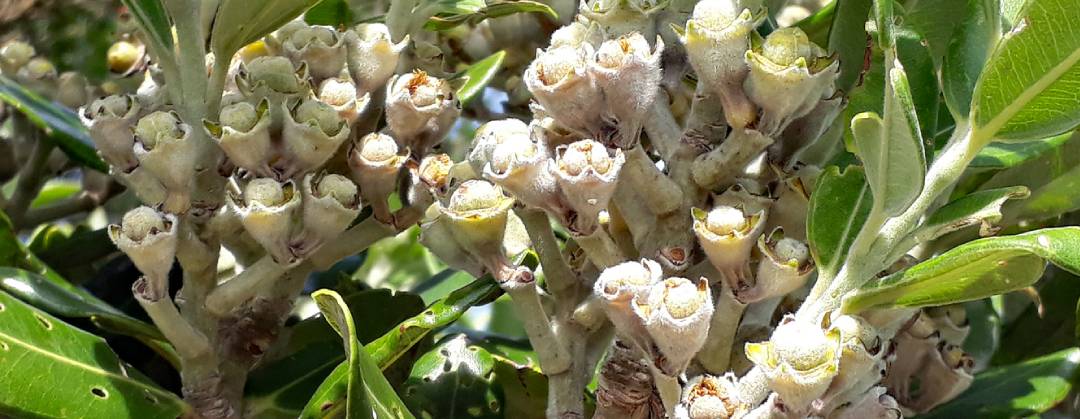New Zealand Christmas tree, hutukawa, kaihika.
Metrosideros excelsa Pohutukawa | Pōhutukawa

This guide is based on a literature review. It compiles information from various sources. Different sources may offer varying advice and findings.
Relatively good viability. Inconsistent germination rate. Can be grown by grafting or cuttings.
Moderate.
A coastal species mainly found in the warmer climate of the North Island.(1)
Filled seeds (fully developed seeds with a complete embryo and endosperm) have a 100% viability rate.(3)
Grows well in volcanic soil.(1)
Myrtle rust (Austropuccinia psidii).
Germination, seed storage, and vegetative propagation need further investigation.
Information about the native seed profiles
All species names are in the following order: scientific name, common name, and Māori name. Names may vary by region. We have tried to use the most common names across New Zealand.
We have sourced photos from different websites and creators. We have used the images under different licences. These include Public Domain and Creative Commons licenses. For Metrosideros excelsa, the image details are:
- Photo by Peter de Lange – no rights reserved (CC0)
- Original image
The basis for each seed profile is a literature review carried out by Scion. Te Uru Rākau – New Zealand Forest Service commissioned and worked on the review to produce a native seed catalogue. The full seed catalogue is on the Ministry for Primary Industries (MPI) website.
References
Bylsma, R. J; Clarkson, B D; Efford, J T (2014) Biological flora of New Zealand 14: Metrosideros excelsa, pohutukawa, New Zealand Christmas tree. New Zealand Journal of Botany 52(1), 1–16.
Bergin, D; Hosking, G (2006) Pohutukawa: Ecology, Establishment, Growth and Management. New Zealand Indigenous Tree Bulletin Series No. 4. Scion; Rotorua New Zealand.
Schmidt-Adam, G; Gould, K S; Murray, B G (2002) Seed biology of Metrosideros excelsa (Myrtaceae). New Zealand Journal of Botany 40(3), 419–425.
Burrows, C J (2000) Germination behaviour of the seeds of six species of Metrosideros (Myrtaceae). Rebus Publications; Christchurch, New Zealand.
Schmidt-Adam, G; Young, A G; Murray, B G (2000) Low outcrossing rates and shift in pollinators in New Zealand pohutukawa (Metrosideros excelsa; Myrtaceae). American Journal of Botany 87(8), 1265–1271.
Metcalf, L J (1995) The propagation of New Zealand native plants. Godwit; Auckland, New Zealand.